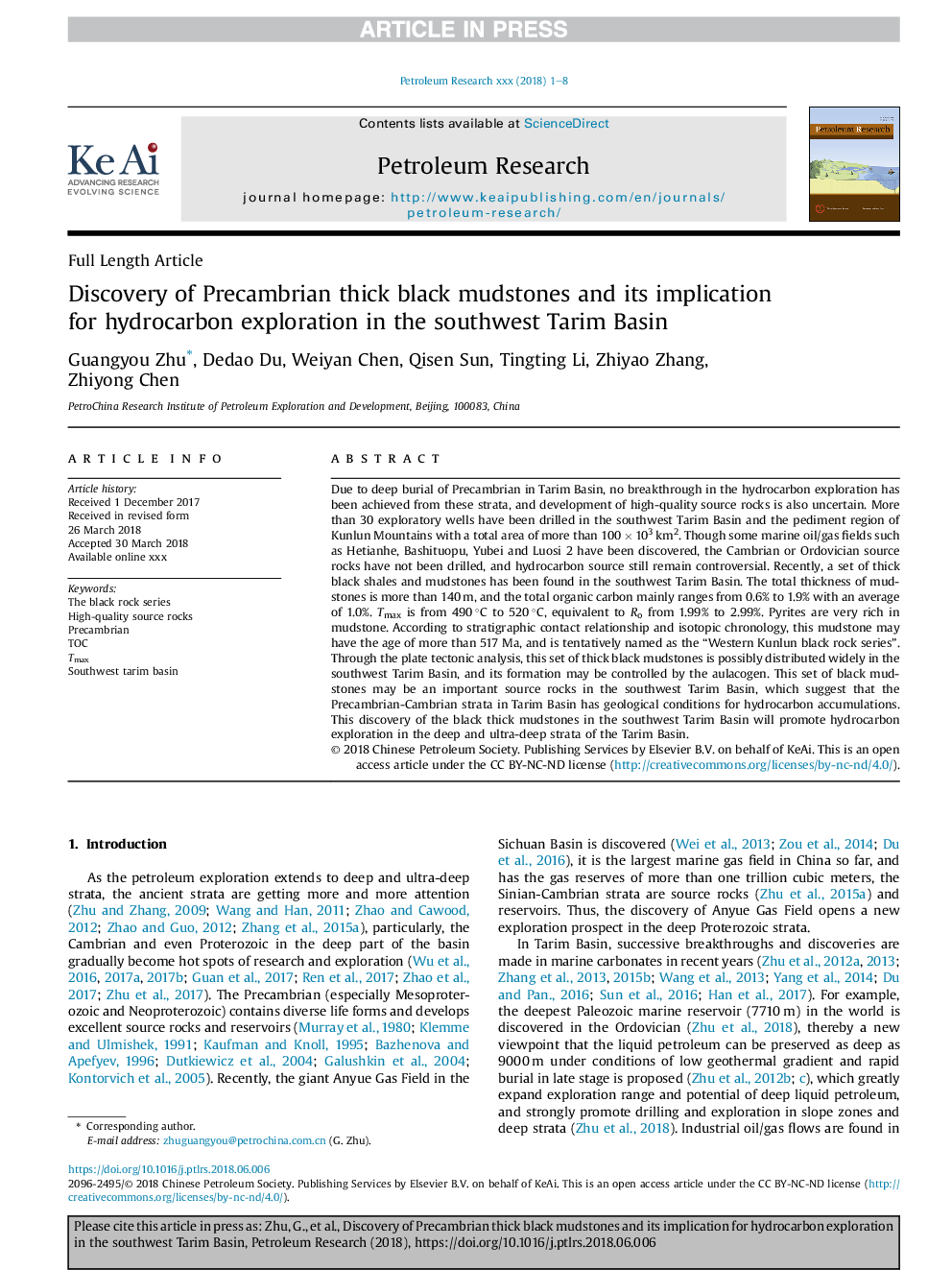| Article ID | Journal | Published Year | Pages | File Type |
|---|---|---|---|---|
| 8918290 | Petroleum Research | 2018 | 8 Pages |
Abstract
Due to deep burial of Precambrian in Tarim Basin, no breakthrough in the hydrocarbon exploration has been achieved from these strata, and development of high-quality source rocks is also uncertain. More than 30 exploratory wells have been drilled in the southwest Tarim Basin and the pediment region of Kunlun Mountains with a total area of more than 100â¯Ãâ¯103â¯km2. Though some marine oil/gas fields such as Hetianhe, Bashituopu, Yubei and Luosi 2 have been discovered, the Cambrian or Ordovician source rocks have not been drilled, and hydrocarbon source still remain controversial. Recently, a set of thick black shales and mudstones has been found in the southwest Tarim Basin. The total thickness of mudstones is more than 140â¯m, and the total organic carbon mainly ranges from 0.6% to 1.9% with an average of 1.0%. Tmax is from 490â¯Â°C to 520â¯Â°C, equivalent to Ro from 1.99% to 2.99%. Pyrites are very rich in mudstone. According to stratigraphic contact relationship and isotopic chronology, this mudstone may have the age of more than 517 Ma, and is tentatively named as the “Western Kunlun black rock series”. Through the plate tectonic analysis, this set of thick black mudstones is possibly distributed widely in the southwest Tarim Basin, and its formation may be controlled by the aulacogen. This set of black mudstones may be an important source rocks in the southwest Tarim Basin, which suggest that the Precambrian-Cambrian strata in Tarim Basin has geological conditions for hydrocarbon accumulations. This discovery of the black thick mudstones in the southwest Tarim Basin will promote hydrocarbon exploration in the deep and ultra-deep strata of the Tarim Basin.
Keywords
Related Topics
Physical Sciences and Engineering
Earth and Planetary Sciences
Geology
Authors
Guangyou Zhu, Dedao Du, Weiyan Chen, Qisen Sun, Tingting Li, Zhiyao Zhang, Zhiyong Chen,
